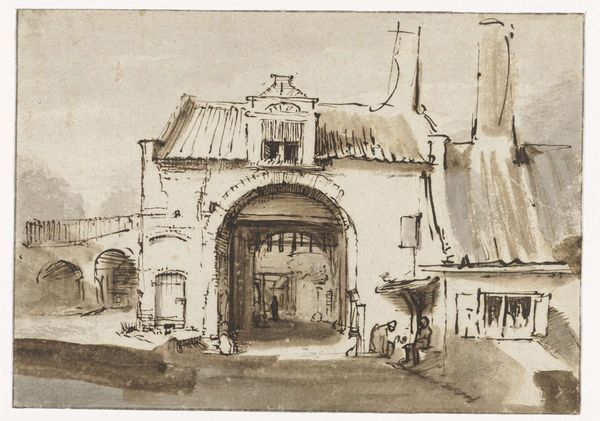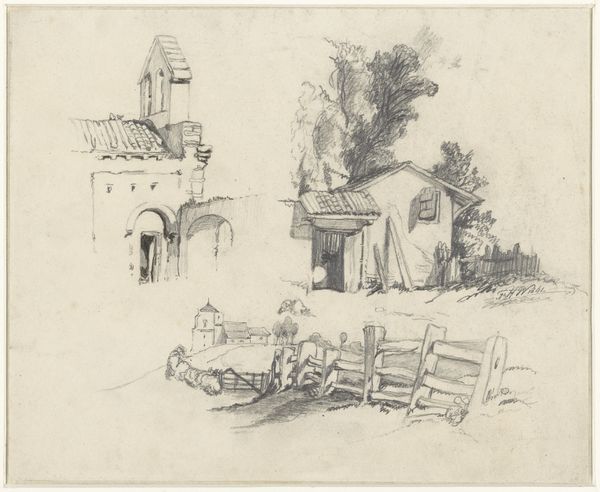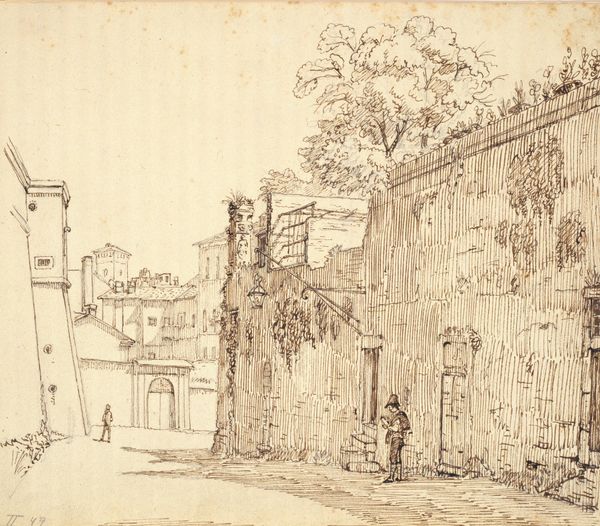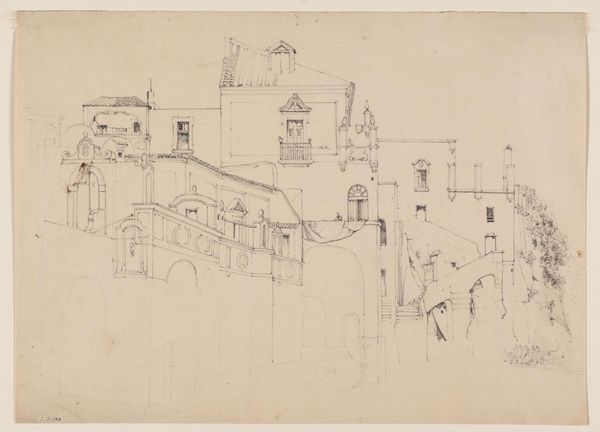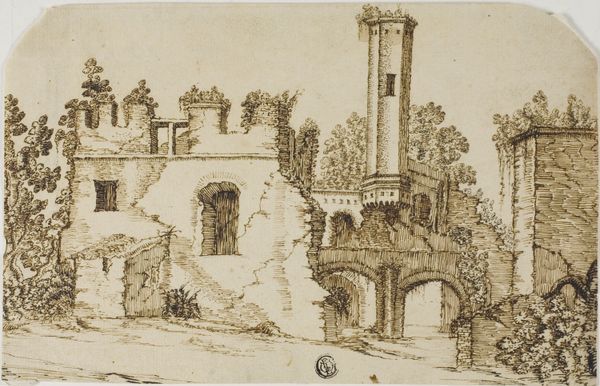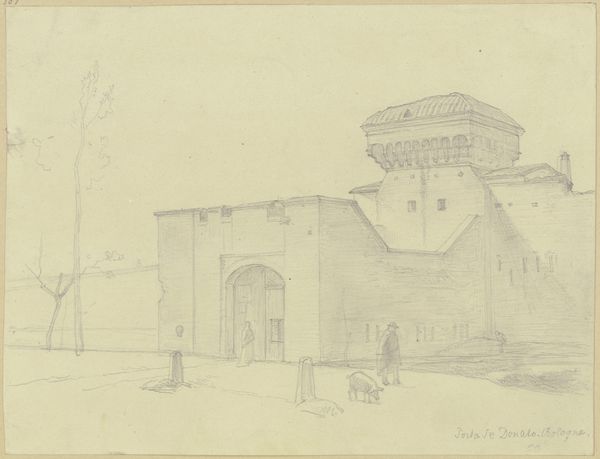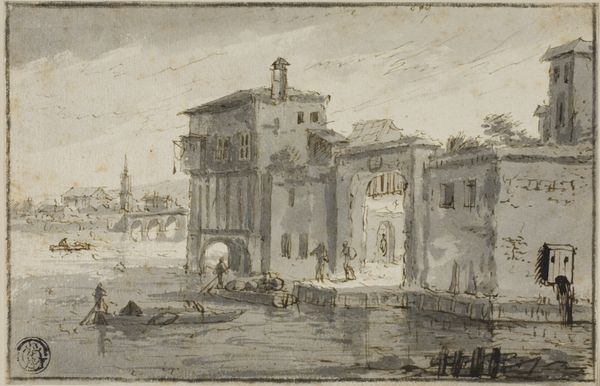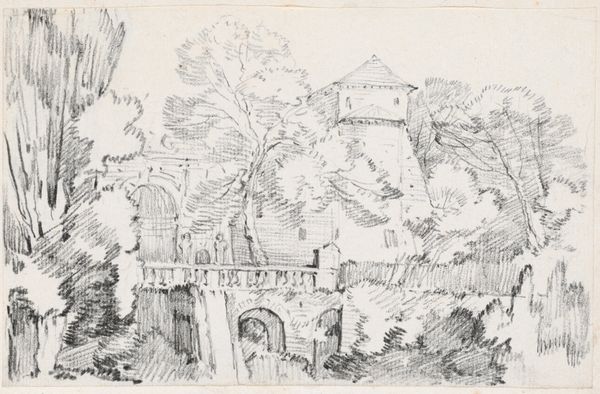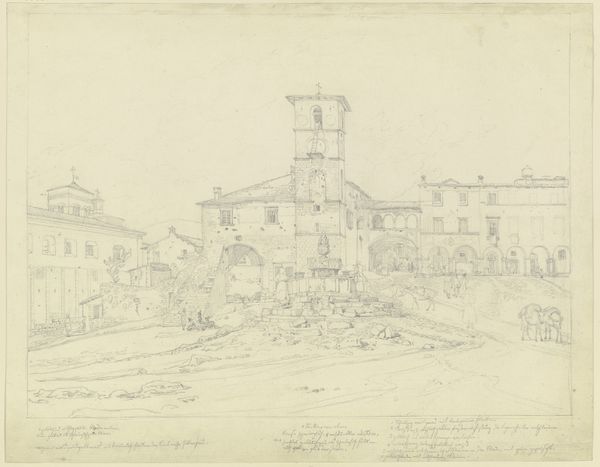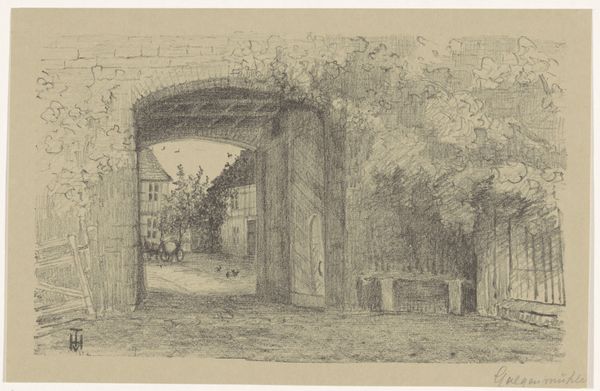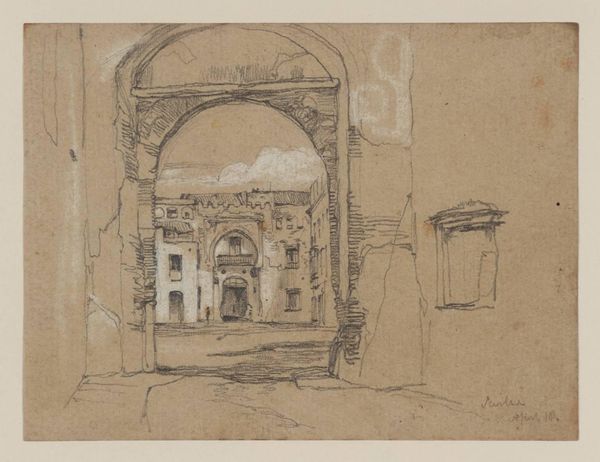
drawing, ink, pencil
#
drawing
#
landscape
#
etching
#
ink
#
romanticism
#
pencil
#
cityscape
Dimensions: 168 mm (height) x 227 mm (width) (bladmaal)
Editor: Here we have Wilhelm Marstrand's "Romersk gård med springvand," or "Roman courtyard with fountain," created in 1837 using pencil and ink. I'm struck by the quiet stillness of this scene; the fountain isn't flowing, and the figures are seated, almost as if posing. What jumps out at you when you look at this piece? Curator: It's interesting you note the stillness. For me, it immediately places this work within the artistic climate of the 19th century, specifically the appropriation of antiquity that was central to the Romantic project. Consider the public role Marstrand intended. What kind of idealised vision of Rome do you think he’s constructing here for a Danish audience? Editor: That's a great question. It feels almost like a stage set, carefully arranged to evoke a romanticized past. Maybe to remind viewers of an imagined simpler and more dignified life? Curator: Precisely! Think about the deliberate staging, the classicizing architecture, and the inclusion of those figures. Are they everyday Romans or types borrowed from art history? How does this image participate in constructing a certain vision of cultural heritage? Marstrand wasn’t just depicting what he saw; he was actively shaping a narrative. The very act of depicting this “Roman courtyard” is a claim about Denmark’s cultural relationship to its European heritage. Editor: So, he’s using Rome as a mirror to reflect on Danish identity and values? I hadn’t thought about it that way. The drawing, with its seemingly objective representation, is actually a very loaded statement. Curator: Absolutely. Art isn’t created in a vacuum; it’s always in dialogue with its socio-political environment. And in this case, that dialogue involves national identity and the political uses of art history itself. Editor: It's fascinating how much more there is to unpack when you consider the broader context. I’ll definitely look at art with a more critical eye from now on. Curator: That’s exactly what I hoped you’d take away from this. Keep questioning, keep connecting the art to its world, and you’ll always find something new.
Comments
No comments
Be the first to comment and join the conversation on the ultimate creative platform.
